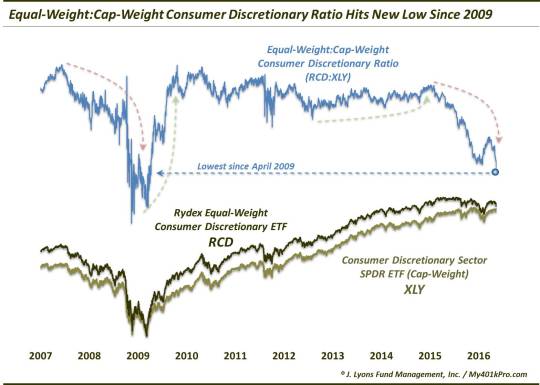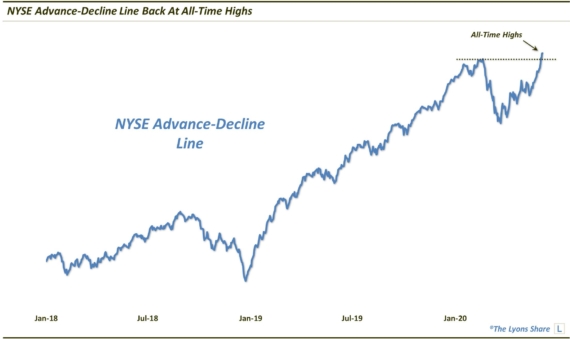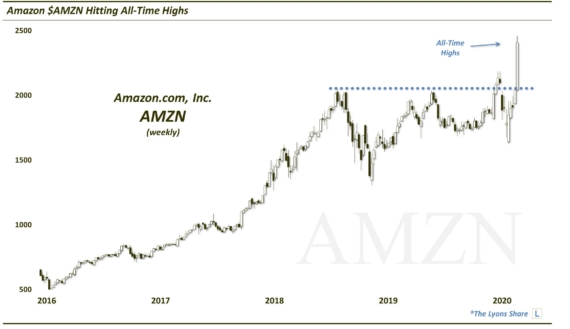Use ‘Discretion’ When Investing In This Sector

While recent “strength” in the consumer discretionary sector has been widely hailed, it is not an accurate portrayal of the broad sector.
One of the data points that some market commentators have been pointing to as a bullish sign is the supposed strength in the consumer discretionary sector. Of course, when this sector is out-performing,
it suggests that the consumer is on good footing – and spending money. Such periods tend to coincide with bull markets and/or robust economic environments. That is why folks are so encouraged by the recent out-performance in consumer discretionary stocks. If only it were true.
Why do we say that? Much of the argument regarding the supposed strength in consumer discretionary stocks centers around the performance of the sector’s most popular ETF, the Consumer Discretionary Select SPDR (ticker, XLY). A look under the hood, however, reveals that much of the recent success of the ETF is owed to 4 letters: AMZN.
Yes, the stock of Amazon, which recently broke out to yet another all-time high. Why is AMZN so integral to this issue? Because it holds a nearly 11% weighting in the XLY, far and away the biggest of any holding. Thus, the recent strength in AMZN has provided a nice boost to the XLY.
Just how much of the XLY strength has been due to AMZN versus the broad sector in general? Fortunately, we have a way to indirectly measure it. We can take the Rydex S&P Equal-Weight Consumer Discretionary ETF (ticker, RCD), which weights each of its holdings equally as the name implies, and compare its performance relative to the XLY. This way, we can get a sense of the strength of the broad sector. And based on this comparison, the “strength” of the consumer discretionary sector seem to be a myth.
As this chart reveals, the relative performance of the RCD versus the XLY. has just dropped to a fresh post-2009 low.

This tells us that much of the apparent strength in the consumer discretionary sector is due to the cap-weighted structure of the XLY – and in particular, AMZN.
Why does it matter? We like to see broad participation within a market or sector as an indicator of health. When that is not occurring, the market can be more vulnerable to weakness as there are fewer issues propping it up. Observe (on the chart) how the relative RCD performance was in freefall during the 2007-2009 decline. Conversely, it jumped strongly during the post-2009 rally and, to a lesser extent, during the 2012-2015 rally.
Besides being a red flag for the prospects of the consumer discretionary sector, and possibly the overall market, this is a good reminder to “know what you own”. That is, know the makeup of the particular fund so that you may better understand the potential reward and risk associated with it. If it is unduly impacted by just one or a few stocks, the fund may be much closer to heading in the opposite direction than one might think.
In other words, use “discretion” when selecting funds for investment.
_____________
More from Dana Lyons, JLFMI and My401kPro.
The commentary included in this blog is provided for informational purposes only. It does not constitute a recommendation to invest in any specific investment product or service. Proper due diligence should be performed before investing in any investment vehicle. There is a risk of loss involved in all investments.


